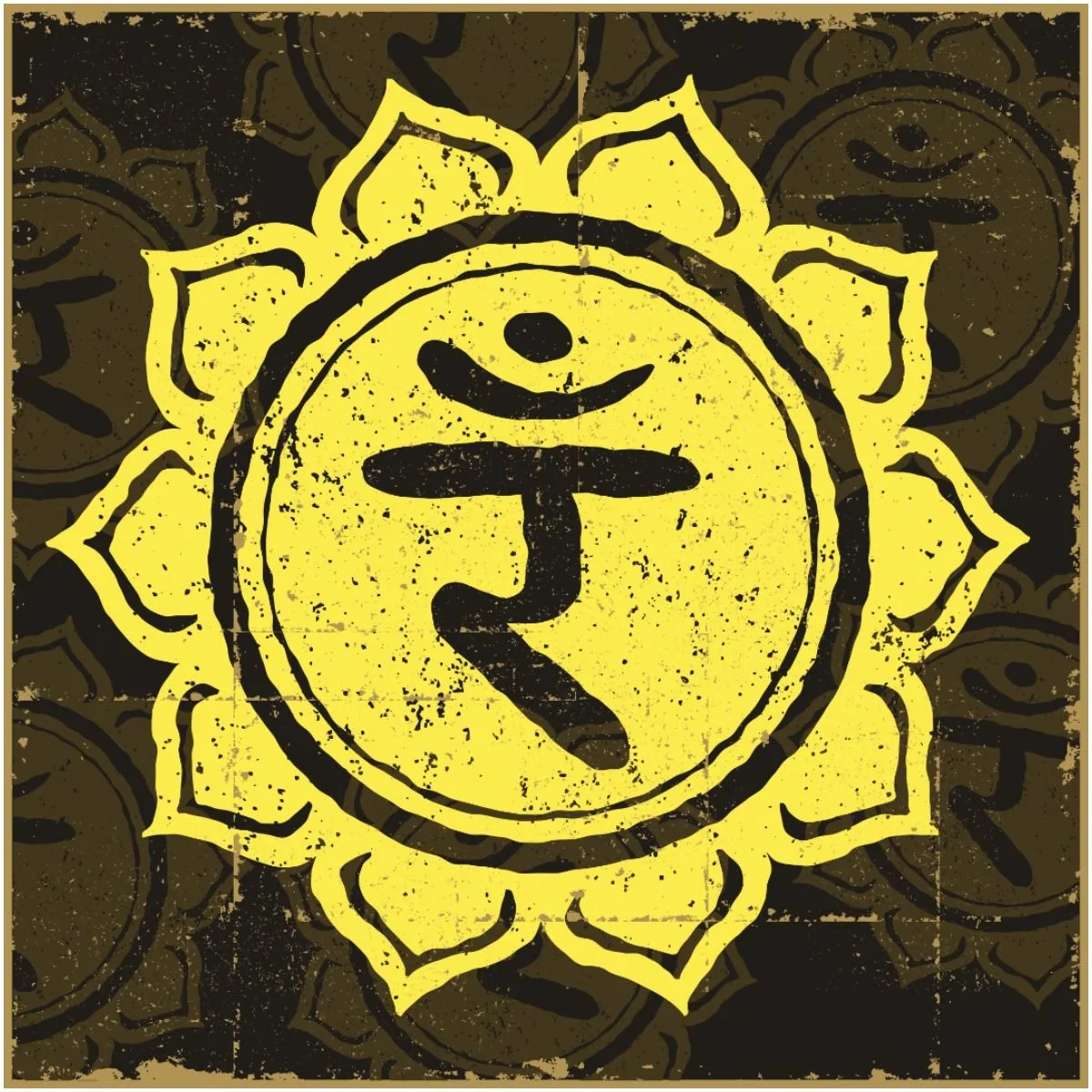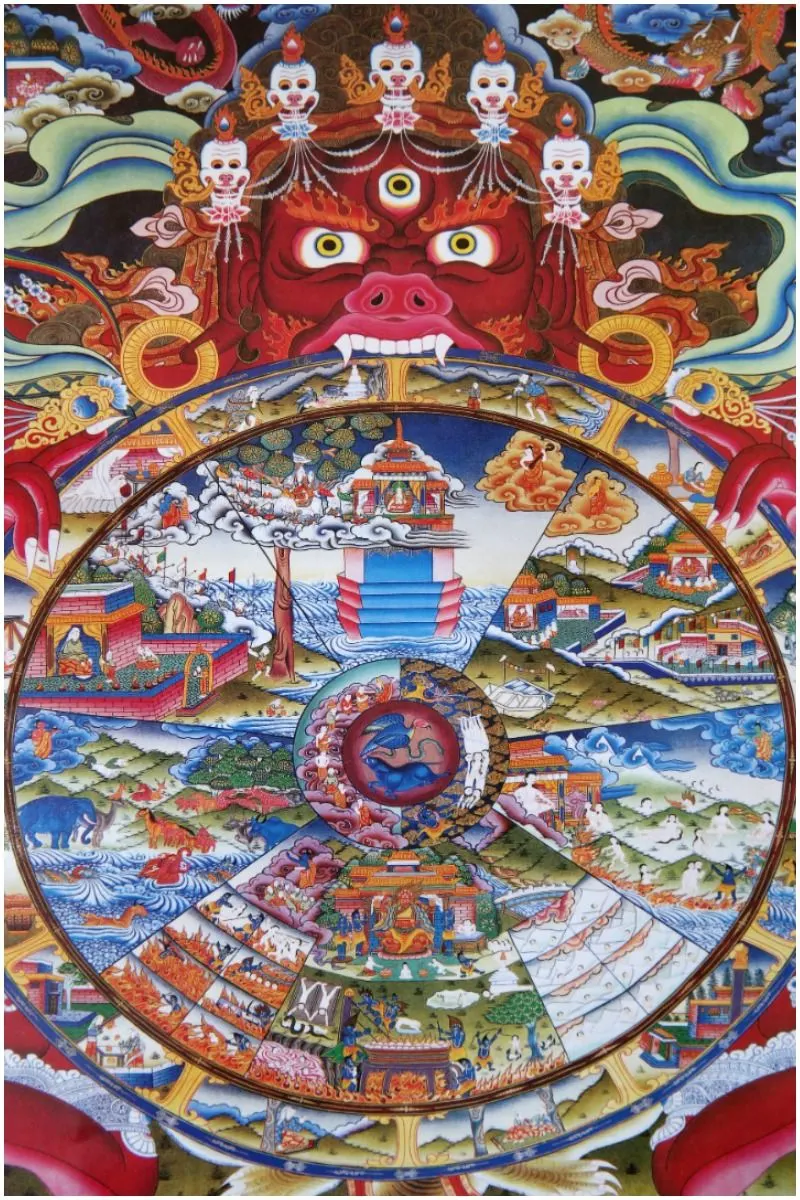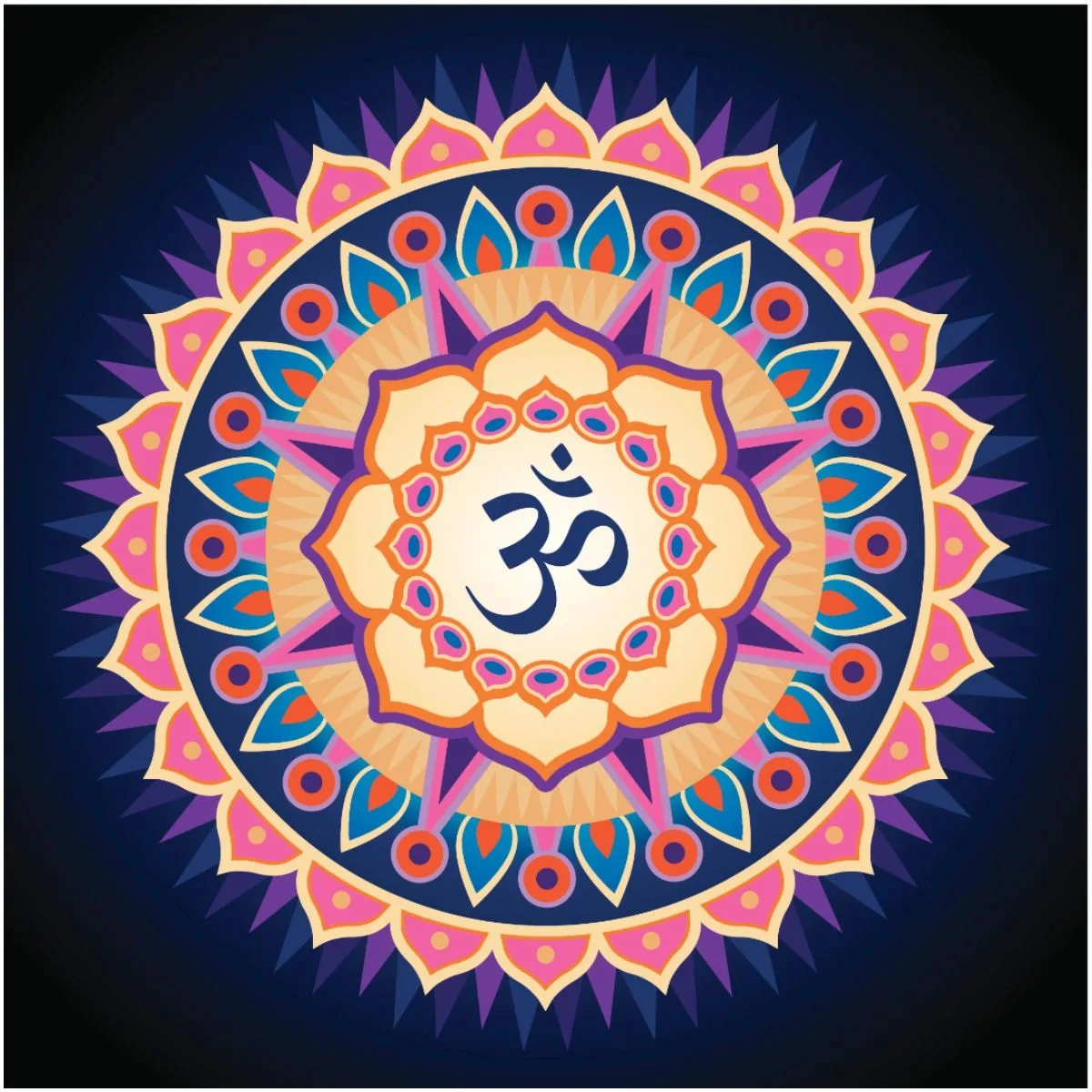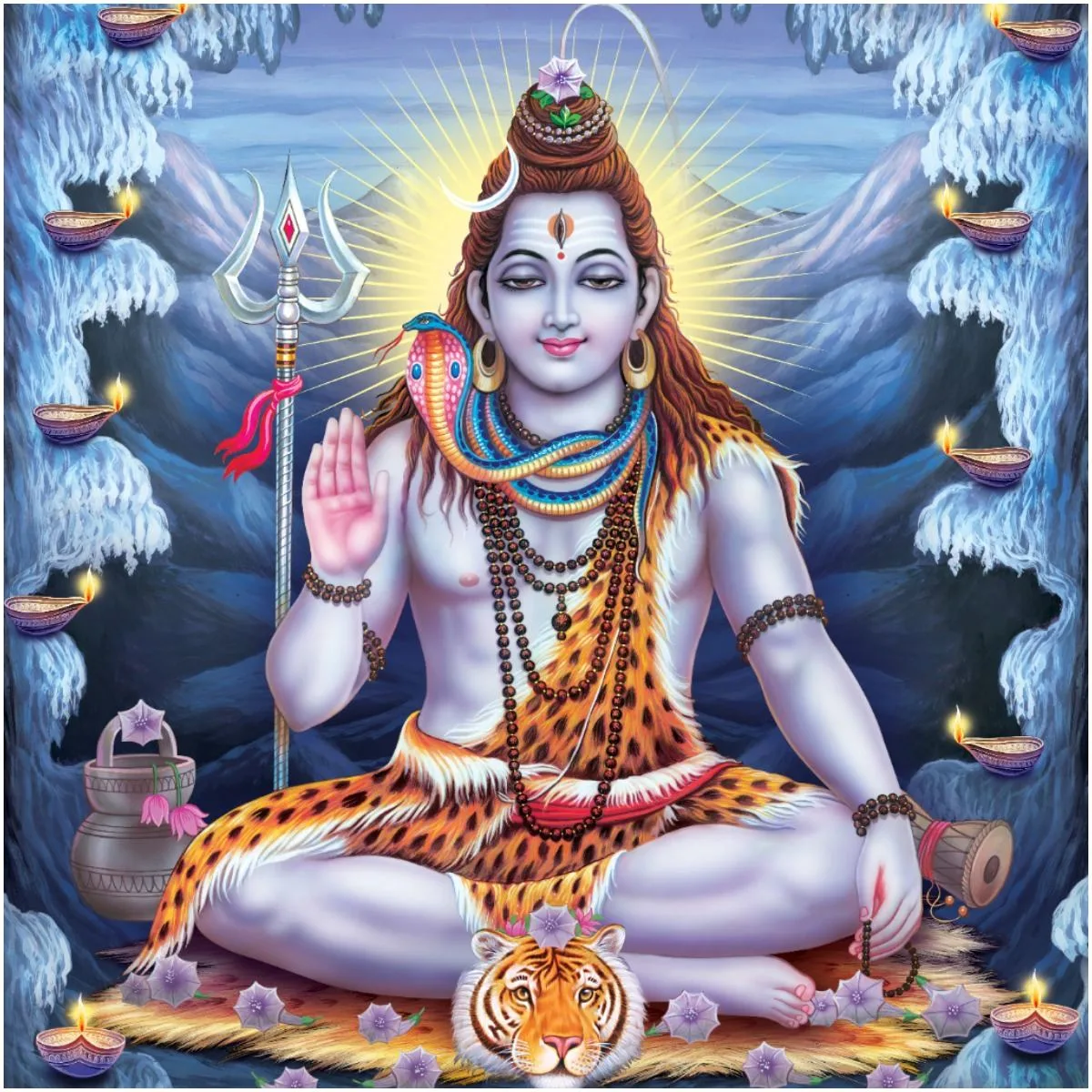Have you ever heard your teacher say a pose name in a different language?
They were probably speaking in Sanskrit. Sanskrit is the classical Indian language and is used in yoga to define practices and poses.
Here are 51 Key Sanskrit Terms Every Yogi Should Know:
#1 Advaita
Advaita is commonly translated as “non-dualism,” though it literally means “non-secondness.”
#2 Ahimsa
Ahimsa or non-injury signifies entire abstinence from causing any pain or harm whatsoever to any living creature, either by word, thought, or deed. Non-injury requires a harmless mouth, mind, and hand.
#3 Ananda
The word Ananda means ”bliss” in Sanskrit, as well as other Indian languages. It is a popular name in Indonesia and India.
#4 Asana
In yoga, asana refers both to the place in which a practitioner sits and the posture in which he or she sits. In addition, asana can be translated as “a steady, comfortable seat,” especially for the purpose of meditation.
#5 Ashtanga-Yoga
Ashtanga yoga literally means “eight-limbed yoga,” as outlined by the sage Patanjali in the Yoga Sutras. This method of yoga involves synchronizing the breath with a progressive series of postures.
#6 Atman
Atman means “soul” or “inner self.” Atman is the eternal, fundamental, ultimate, immutable pure consciousness.
#7 Ayurveda
The term Ayurveda combines the Sanskrit words ayur (life) and Veda (knowledge or science). Traditional Chinese Medicine and Tibetan medicine are both rooted in Ayurveda.
#8 Bhakti
Bhakti, meaning “devotion,” is a spiritual path or spiritual practice within Hinduism focused on the cultivation of devotion and love toward God.
#9 Brahman
The word comes from the Sanskrit verb root brh,” meaning “to grow.” Etymologically, the term signifies “that which grows” and “which causes to grow.”
#10 Chakra
The Sanskrit word chakra literally translates to “disk” or “wheel.” There are 7 main chakras, which align the spine, starting from the base of the spine through to the crown of the head.
#11 Dharma
Dharma signifies behaviors that are considered to be in accord with rta, the order that makes life and universe possible, and includes laws, duties, rights, conduct, virtues and the ‘‘right way of living’’.
#12 Dhyana
The term Dhyana appears in Aranyaka and Brahmana layers of the Vedas but with unclear meaning, while in the early Upanishads, it appears in the sense of “contemplation, meditation” and an important part of the self-knowledge process.
#13 Guru
Guru translates as someone who is a “guide, teacher, expert or master.” This Sanskrit term also refers to someone who primarily is one’s spiritual guide, who helps one to discover the same potentialities that the guru has already realized.
#14 Jnana
This term signifies knowledge acquired through meditation and study as a means of reaching Brahman.
#15 Karma
The word karma refers to an action, work, or deed. Karma is the root of suffering and the limitations of birth, length of life and quality of life, but we are not entirely determined by our karma; in other words, we cannot change the past, but we can shape the future.
#16 Kriya
It refers to a completed action, practice or technique within a yoga discipline meant to achieve a specific result. In Kundalini Yoga, a kriya is a series of postures, sound, and breath, that work toward a specific outcome. Each kriya has a different effect, but all work on all levels of your being.
#17 Kundalini
The Sanskrit adjective kuṇḍalin means “circular, annular”. The primal energy, or shakti, is located at the base of the spine. The concept of Kundalini is mentioned in the Upanishads.
#18 Manas
Manas, translated as “mind” or “to think,” is the recording faculty; it receives impressions gathered by the sense from the outside world. Manas is similar to the supervisor in the factory of life, directing the 10 senses.
#19 Mandala
The word mandala means “circle”. A mandala represents wholeness, a cosmic diagram reminding us of our relation to infinity, extending within and beyond our minds and bodies.
#20 Mantra
It is a sacred utterance, a numinous sound, word or phonemes, a syllable, or group of words in Sanskrit considered by practitioners to have spiritual and psychological powers. The Sanskrit word mantra consists of the root man- “to think” and the suffix -tra, designating instruments or tools; hence, a literal translation would be “instrument of thought.”
#21 Marma
The word marma comes from the Sanskrit origin marr or mru. The Sanskrit phrase “Marayate Iti Marmani” means there is a likelihood of death or serious damage to health after infliction to these places and hence these areas are called marma.
#22 Maya
The word origin of Maya is derived from the Sanskrit roots ”ma” and ”ya,” meaning “that.” So the meaning of Maya is “that is not” but which appears to be real.
#23 Mudra
A gesture or position, commonly of the hands, that locks and guides energy flow and reflexes to the brain.
#24 Namaste
In Sanskrit, the word is namah + te = namaste, which means “I bow to you” – my greetings, prostration or salutations to you.
#25 Nadi Shodana
The breathing technique helps clear out blocked energy channels in the body, which in turn calms the mind (nadi = subtle energy channel; shodhan = purification, cleaning).
#26 Om
In Hinduism, Om is one of the most important spiritual symbols. It refers to Atman (self within, soul) and Brahman (the entirety of the Universe, cosmic principles, ultimate reality, truth, divine, supreme spirit, knowledge).
#27 Prana
It is the Sanskrit word for ”vital principle” or “life force.” In yoga, the concept of prana is very scientific. When we speak of prana, we do not mean the breath, air or oxygen. Precisely and scientifically speaking, prana translates as the original life force.
#28 Pranayama
”Prana” refers to the universal life force and ”ayama” means to lengthen or to regulate.
#29 Prajna
The term “Pra” refers to “before,” and the term “jna” refers to “knowledge.” The compound of these two Sanskrit terms translates as before knowledge, profound knowledge, or root knowledge.
#30 Pingala
Translates as “golden,” and “solar” and it is found on the right side of the spine, mirroring the ida.
#31 Pratyahara
Pratyahara is the withdrawal of the senses of cognition and action from both the external world and the images or impressions in the mind field.
#32 Rishi
The term translates as “sages” or “seers”, who, after intense meditation, realized truths and eternal knowledge, which they composed into hymns.
#33 Sadhana
Sadhana means daily spiritual practice. It is the foundation of all spiritual endeavors.
#34 Sahaja
The Sanskrit word sahaja means “spontaneously or naturally born together”. Sahaja Yoga is not only the name of the movement but also the technique the movement teaches and the state of awareness achieved by this spiritual technique.
#35 Samadhi
The term samadhi literally means sama and dhi – sama meaning equanimity and dhi meaning buddhi or the intellect. Samadhi, the union of the busy thinking mind with its deepest, most silent level, the unified field of consciousness, the Self.
#36 Shanti
Shanti, Santhi or Shanthi means tranquility, peace, rest, calmness, or bliss.
#37 Shakti
The term refers to “empowerment” or “power”, and is the primordial cosmic energy and represents the dynamic forces that are thought to move through the entire creation.
#38 Shiva
The Sanskrit word “Shiva” comes from the Shri Rudram Chamakam of the Taittiriya Shakha of the Krishna Yajurveda. The word means auspicious, and it is used as an adjective only in the Rig Veda.
#39 Sunyata
Literally translates into English as voidness or emptiness.
#40 Siddhi
The Sanskrit word siddhi translates as supernatural, spiritual, paranormal, or otherwise abilities, magical powers, and attainments that are the products of spiritual advancement through sadhanas, such as yoga and meditation.
#41 Sushumna
Sushumna is the central channel and is linked with the river Saraswati.
#42 Sutra
It means “string” or “thread”.
#43 Svadhyaya
This Sanskrit term literally means “one’s own reading” and “self-study.”
#44 Tantra
Etymological meaning: the verbal root of tantra is tan, “to expand,” followed by the suffix tra, which is frequently an instrumental suffix. Thus, tantra means “an instrument for expansion”.
#45 Tapas
It translates traditionally as ”discipline” or ”austerity”. This word is derived from the root Sanskrit verb ”tap” which means ”to burn”, and evokes a sense of ”passion” or ”fiery discipline”.
#46 Ujjayi
The word “ujjayi” is derived from the Sanskrit root “ji” with the prefix “ud” added to it. So the combined root is “ujji” which means “to be victorious”. Ujjayi, thus means “one who is victorious” and “ujjayi breath” would mean “the victorious breath”.
#47 Veda
The Sanskrit word veda translates as “wisdom” or “knowledge”, and it is derived from the root vid- “to know”. The Vedas are a large body of texts originating in the ancient Indian subcontinent.
#48 Vedanta
Vedanta means “the purpose or goal of the Vedas.” Vedanta can also be used as a noun to describe one who has mastered all four of the original Vedas.
#49 Yama
Yama is the lord of death. In the Rigveda, he is mentioned as one who helped humankind find a place to dwell and gave every individual the power to tread any path to which s/he wants.
#50 Yantra
Yantra is the Sanskrit word for a mystical diagram, particularly diagrams from the Tantric traditions of the Indian religions.
#51 Yoga
The meaning of the word Yoga is “union.” It is derived from the Sanskrit root “yuj”, meaning “to unite”, “to join” but also “to subjugate”, “to discipline” and “to control”. Yoga is both a state of connection and a body of techniques that allow us to connect to anything.


Jayna
Wednesday 23rd of October 2019
V informative profound happy reading